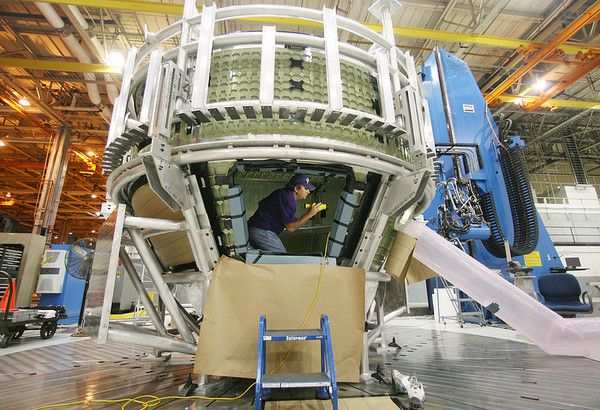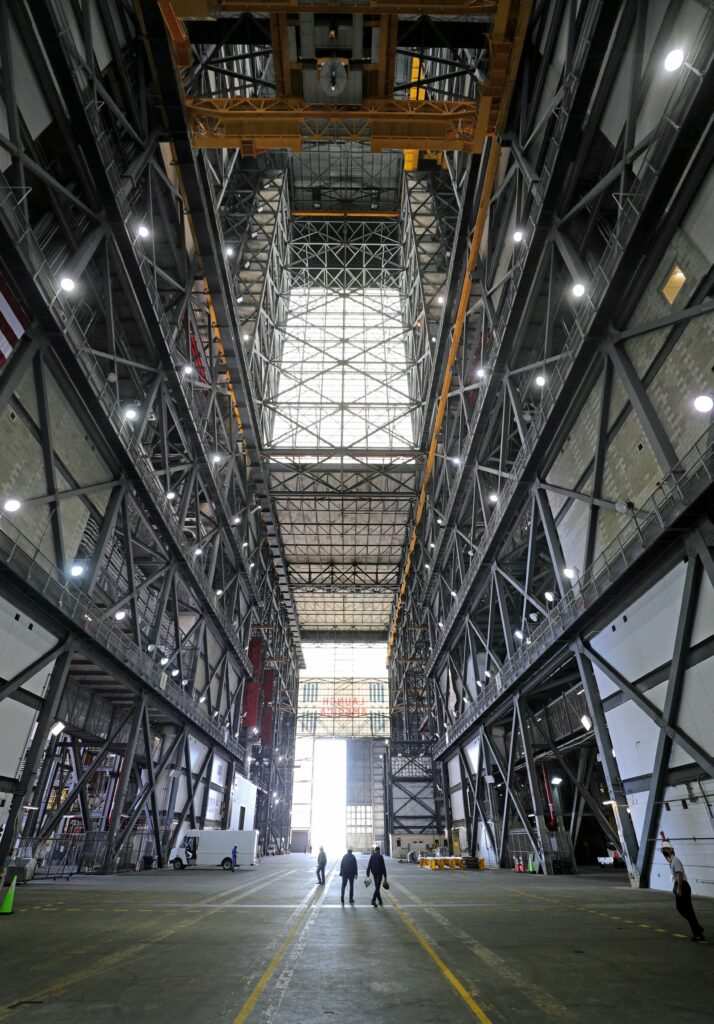NASA Administrator Bill Nelson pitched a solution to the pricey moon lander problem the agency is facing during a Senate hearing on Tuesday that did not involve its nearly $25 billion budget request.
He urged his former colleagues on the Senate Appropriations Committee to pass a jobs bill that could add billions of dollars to support competitive bids for the Human Landing System (HLS) for NASA’s Artemis missions to return humans to the moon by 2024 as well as fund repairs for 20 NASA facilities he says are in dire need of infrastructure help.

“Now there are many different ways to skin a cat as you all well know, and that is you’ve got a jobs bill coming along, and there is in one form a recommended R&D component in that jobs bill aside from just straight infrastructure,” he said.
President Biden pitched the $3 trillion jobs and infrastructure bill in March, but recent efforts for a bipartisan version, some with only a $1 trillion price tag, have been taken in the Senate. Nelson is aiming for any version to address NASA’s needs.

(Joe Burbank/Orlando Sentinel/TNS)
Nelson took on the role this year as NASA administrator for the Biden administration, having flown on the space shuttle when he was in the U.S. House of Representatives in the 1980s and having served in the U.S. Senate for Florida from 2001-2019.
The appropriations committee can’t act on his angle to find funding elsewhere outside of the budget request, but the hearing allowed Nelson to lobby for funds from alternative sources than the submitted budget. Nelson has said he’d heard from several members of Congress that they were not happy with NASA choosing just one contractor to pursue the HLS.
Earlier this year, NASA awarded SpaceX as the sole contractor for the initial HLS to be used on the Artemis III mission, which aims to land the first woman on the moon, and return humans to its surface for the first time since the end of the Apollo program in 1972.

But the two groups that lost out to SpaceX, a consortium led by Jeff Bezos’ Blue Origin as well as the company Dynetics, filed a protest with the General Accounting Office about the decision. Leading up to the choice this year of just one contractor, NASA had been angling to choose two of the three companies to pursue competitive development of the lander.
“The jobs bill is a way that you could fund NASA’s needs not only for infrastructure, but also for this additional money to try to give us the competitive option over so that we can downselect two landers at least, let them compete and ultimately have the source selection board decide on one,” Nelson told the committee.
As far as infrastructure, Nelson has said the jobs bill has an ask for $5 billion for 10 NASA space centers and 10 other NASA facilities.

“For example, the big building down in New Orleans that puts together the core of the big rocket, it’s got holes in the roof and they need some money to repair that,” Nelson said of the Michoud Assembly Facility that constructs the Space Launch System rockets to be used for the Artemis missions.
He made it clear that the $24.8 billion request, of which more than $6.8 billion is for the Deep Space Exploration Systems including Artemis, it only has funds for the SpaceX option for that first moon landing, and without more funding, the target dates for Artemis III would be in jeopardy.
Artemis I, an uncrewed flight to the moon, is scheduled to lift off from Kennedy Space Center as early as November with the crewed Artemis II flight slated for 2023 that will orbit but not land on the moon. The Artemis III mission that would put the first woman on the moon as part of two-person landing team on the moon’s South Pole is aiming for 2024, and that can’t happen without the moon lander.

(Joe Burbank/Orlando Sentinel/TNS)
“The fact is 2024 is the goal,” Nelson said. “Space is hard and if you look at the history of development of spacecraft and rockets you often run into situations in which in fact there is some unknown that occurs and you see delays. We’ve got to be soberly realistic about this, but the goal is 2024.”
When asked by the committee if this year’s budget request meets the 2024 goal, Nelson responded, “Unless you want competition, and I’ve suggested a way to do that.”
NASA under the Trump administration had in late 2020 asked for an additional $3.2 billion to support the lander competition. Congress, though, had only appropriated $800 million for the endeavor, half of which was allotted to the initial efforts by all three companies. Nelson said that Dynetics’ proposal for development came in near $8.5 billion, while Blue Origin – which is partnered with Lockheed Martin, Northrop Grumman and Draper – came in near $6 billion. The SpaceX proposal came in at about $3 billion, and that included a significant cost being born by the company founded by Elon Musk, and that price point led to NASA’s decision.

The protest, though, is now in the hands of the GAO which will make a decision by Aug. 4. That decision may force NASA to go back to awarding money to two companies, which in turn might delay the Artemis plans because of a lack of funding.
NASA is already pursuing a competitive contract for continued lunar transport after the initial crewed demonstration mission. That technically is open to both the Blue Origin and Dynetics teams that lost on the initial contract, as well as others that weren’t part of the final three.
“Going forward we’re going to have one way or another a competition for a lot of landings on the moon over the next decade and a half, in which case this country boy from Florida thinks that you ought to have competition,” Nelson said.
As of last fall, the overall costs for Artemis through 2024 had risen to $28 billion.
This year’s budget request supports the planned launch this fall, continued construction of the next two rockets and Orion capsules as well as the HLS development.
“It’s a very robust request but the hard reality is that if we want to do competition on down the line of all the landings that need to get started right now, there’s going to need to be more money and I’m suggesting that the jobs bill is a way that you could do that,” Nelson said.
___
© 2021 Orlando Sentinel
Distributed by Tribune Content Agency, LLC.



